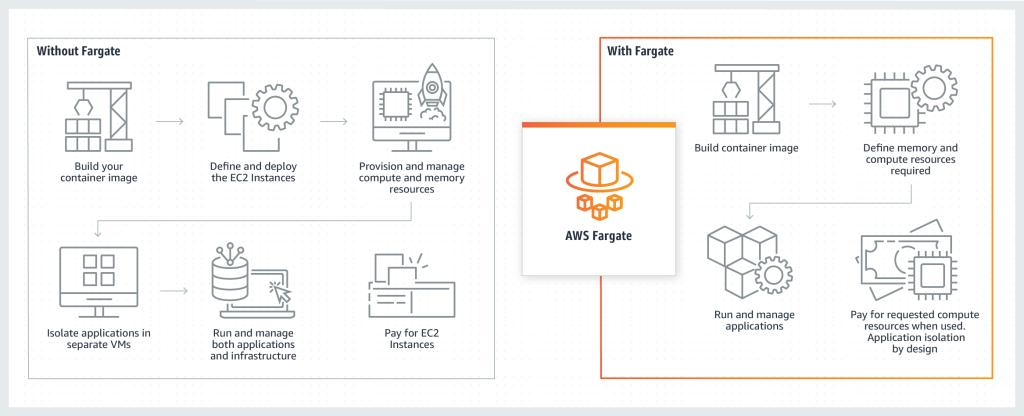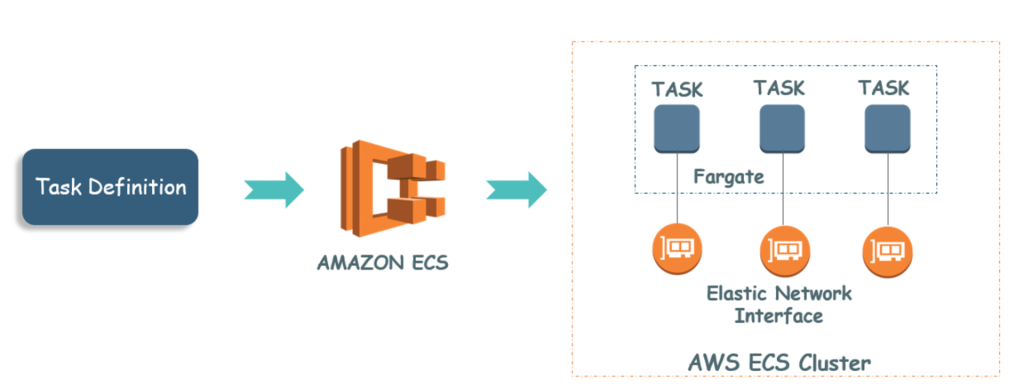AWS Fargate is a fully managed service for running containers on Amazon Web Services (AWS). It provides a way to run containerized applications without having to manage the underlying infrastructure.
In this blog post, we will explore what AWS Fargate is, how it works, the advantages of using it, and real-world case studies of businesses that are using it.

What is AWS Fargate?
AWS Fargate is a service that allows developers to run containerized applications without having to manage the underlying infrastructure. This means that developers can focus on writing code and deploying applications, while AWS takes care of the underlying infrastructure, such as the servers and network.
Fargate also integrates with other AWS services, such as Amazon Elastic Container Service (ECS) and Amazon Elastic Kubernetes Service (EKS), making it easy to run and manage containerized applications in the cloud.
How AWS Fargate works
AWS Fargate runs containers on a cluster of Amazon Elastic Compute Cloud (EC2) instances. These instances are managed by AWS, so developers don’t have to worry about provisioning or scaling them.
Fargate also provides automatic load balancing and scaling, so applications can automatically handle changes in traffic.
When a developer wants to run a containerized application on Fargate, they will create a task definition, which is a blueprint of the application and its requirements.
They can then create a task from this definition, which will launch the application on a Fargate cluster.
The developer can then use the AWS Management Console or the AWS CLI to manage and monitor the task, including scaling the number of tasks as needed.

AWS Fargate offers various features such as:
- The Elastic Compute Cloud Command Line Interface (ECS CLI) for creating and managing tasks, services, and clusters on Amazon ECS
- Networking capabilities including support for VPC networking mode and elastic network interface
- Flexible configurations with 50 different combinations of CPU and RAM to match workload needs
- Container registry support for seamless authentication and pulling images from Amazon ECR or other public repositories
- Resource-based pricing where you pay only for the time a task consumes resources, calculated per second with a minimum fee of one minute
- Permission tiers for managing access to cluster services and using the task IAM role
- Monitoring and logging through CloudWatch for application logs and metrics for services
- Load balancing through Application and Network Load Balancers
- Compatibility with both EC2 and Fargate launch types within any Amazon ECS cluster.
AWS Fargate Pricing
Pricing is based on the amount of vCPU and memory resources used by a task or service.
You are charged for the number of seconds that a task or service runs, rounded up to the nearest second.
Additionally, you are charged for the amount of data that is transferred out of a VPC.
Other charges may apply, such as data transfer, Elastic IP addresses and Amazon EBS volumes.
It’s recommended to consult the AWS pricing page for the most up-to-date pricing information.
Advantages of using AWS Fargate

There are several advantages to using AWS Fargate, including:
- No infrastructure management: As mentioned earlier, Fargate allows developers to focus on writing code and deploying applications without having to worry about the underlying infrastructure.
- Automatic scaling: Fargate automatically scales applications based on changes in traffic, so developers don’t have to manually scale their applications.
- Security: Fargate integrates with AWS security services, such as Amazon Virtual Private Cloud (VPC) and IAM, to provide a secure environment for running containerized applications.
- Cost-effective: Fargate allows developers to pay for only the resources they use, with no upfront costs or long-term commitments.
Case studies of businesses that use AWS Fargate
There are many businesses that are using AWS Fargate to run their containerized applications, including:
Capital One
Capital One uses Fargate to run its AWS-native, cloud-based mobile banking app. By using Fargate, Capital One is able to quickly and easily scale its application to handle changes in traffic.
GoDaddy
GoDaddy, the one of largest web hosting companies in the world, uses Fargate to run its web hosting and domain registration services. By using Fargate, GoDaddy is able to focus on developing new features for its services without having to worry about the underlying infrastructure.
FINRA
Financial Industry Regulatory Authority (FINRA) uses Fargate to run its market surveillance and regulatory compliance services. By using Fargate, FINRA is able to quickly and easily scale its services to meet the needs of its customers.
Conclusion
AWS Fargate is a fully managed service for running containerized applications on Amazon Web Services. It allows developers to focus on writing code and deploying applications without having to worry about the underlying infrastructure. Fargate also provides automatic scaling, security, and cost-effective pricing, making it.

